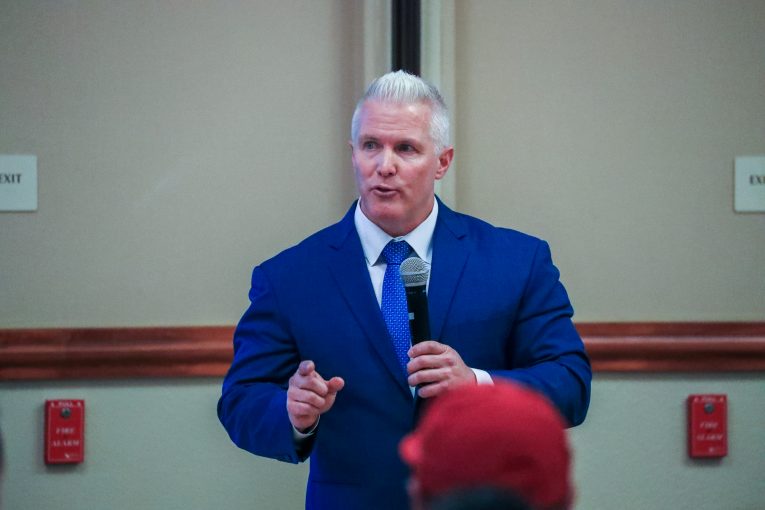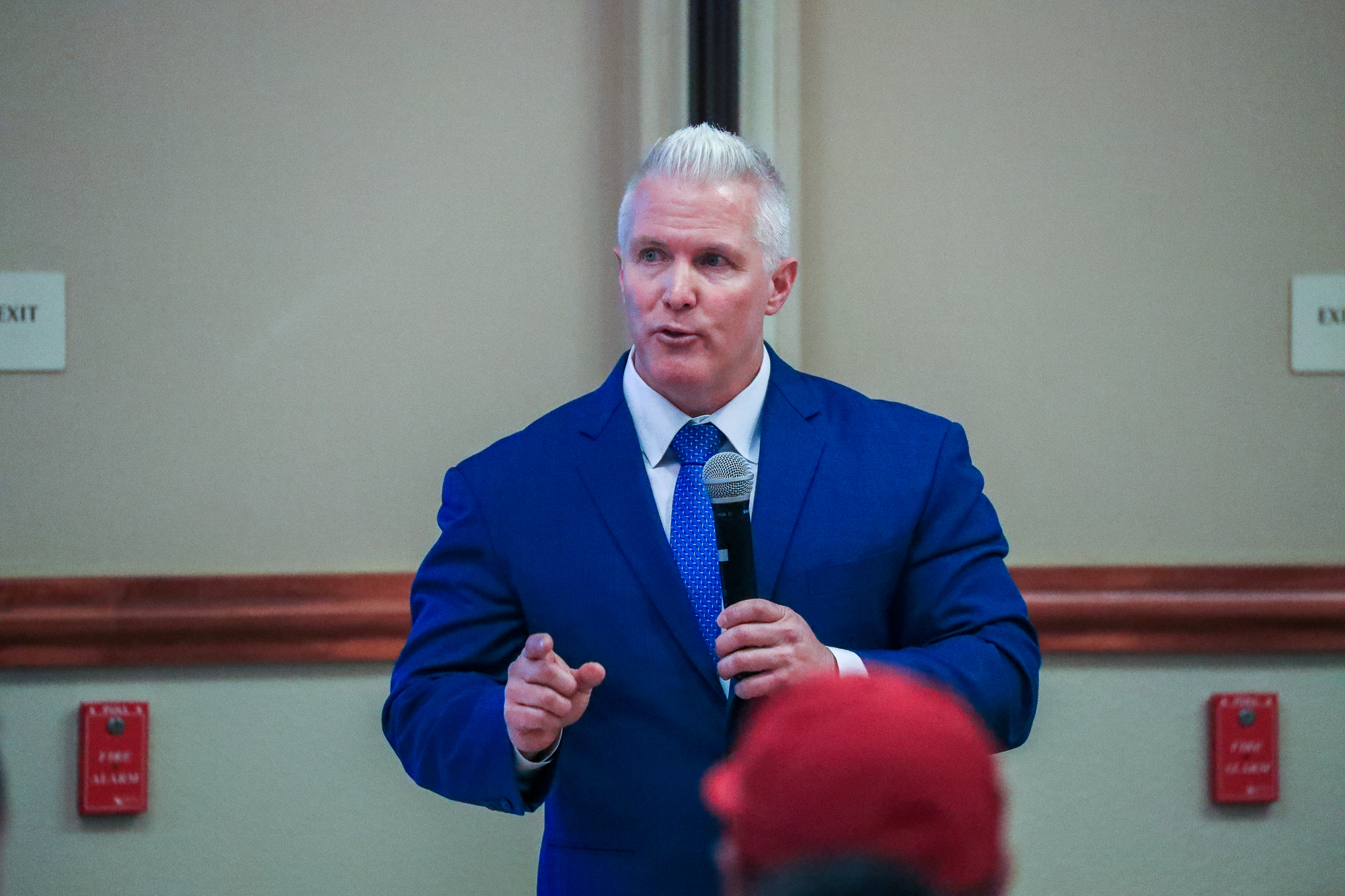

By David M. Greenwald
Executive Editor
Sacramento Sheriff Jim Cooper and Yolo DA Jeff Reisig put forth what they call a “new thinking on our homeless epidemic”but in actuality it is a recycled view that Jeff Reisig has been pumping out since 2018 —drugs and Prop. 47 are at the root of the problem.
“Our once-great cities are being hollowed out. This requires us to move beyond the tired blame game of politics and the same approaches to the problem that have proven to be abject failures,” they write. “We can do better, and we can learn from what other states could teach us if we are willing to listen.”
Ironically they attempt to solve homelessness without addressing the state’s housing crisis. This is what you get when law enforcement officials attempt to solve social problems—a focus on drug policies and no acknowledgment of the problem of housing or housing affordability.
They focus instead on drug laws.
“Several large Democratic states have low homelessness rates, such as New Jersey, Maryland, Michigan and Illinois,” they write. “We believe there is a reason for this: All these states have much stronger hard drug laws than California.”
“In our opinion,” they continue, “fentanyl, heroin and other hard drug addictions — and the associated mental health crises that these drugs sometimes entail — are the root  cause of California’s homeless crisis.”
cause of California’s homeless crisis.”
They add, “In California, there is essentially no consequence for hard drug possession. Therefore, law enforcement rarely arrests for the crime. In New Jersey, hard drug possession can lead to a three-to-five-year sentence and substantial fines.”
They cite data that these states have much lower homeless rates than California—which we know.
But there is a lot of data analysis missing here.
They make no effort to compare California to other states with high homeless rates. They offer no data on whether drug usage in California is substantially higher than other states as the result of the laws. And, most importantly, again, they never address the issue of housing costs.
DA Reisig has consistently put forth the need to have data-informed policy decisions. While I disagree with many things from the DA, I agree here. My problem is that he’s put forth insufficient data to back his decision and he ignores experts who are both trained methodologists and experts on homelessness.
Let’s start with housing costs, with the typical home value in California in March 2023—$722,000 compared to $222K in Illinois, $218K in Michigan, $387K in Maryland, and $451K in New Jersey.
If we look at median home price—pretty similar numbers according to Rocket Homes.
Bottom line, comparing California to those four states is not apples to apples because of the vast differences in home prices between the states.
An LAO report found “an average California home costs 2.2 times the national average. California’s average monthly rent is about 50 percent higher than the rest of the country.”
The same LAO report found, “While homelessness is a complex problem with many causes, the high cost of housing is a significant factor in the state’s homelessness crisis.”
While issues such as substance use and mental illness might exacerbate chronic homelessness, researchers last year found that it was cost of housing that was driving the homelessness problem.
In their University of California Press book, Homelessness is a Housing Problem, authors Clayton Page Aldern and Gregg Colburn analyze the data.
In examining the rate of homeless per 1000 people, “they found communities with the highest housing costs had some of the highest rates of homelessness.”
In an article that appeared in the San Diego Union Tribune, the researchers noted they “are not suggesting that mental illness, addictions and other issues are not contributing factors to homelessness.
“That’s certainly not the point of the book,” Colburn said. “But I firmly believe that we can’t treat our way out of this problem. You could fix all the addiction in San Diego right now and you’d still have a problem with homelessness because there just aren’t places for people to go who have lower levels of income.”
Lisa Jones, executive vice president of strategic initiatives at the San Diego Housing Commission, agreed on a connection between housing and homelessness.
“High-cost rental markets that far outstrip area median incomes — and push renters into paying more than 50% of their income toward rent — certainly are a significant contributing factor to making households at high risk of experiencing homelessness,” she wrote in an email.
“When households do experience homelessness, those factors make it even harder for them to exit homelessness by renting in the private rental market,” Jones continued. “We also know that the longer a household experiences homelessness, the more likely other key quality-of-life factors will be affected, such as physical and mental well-being.”
Leaving the strict issue of causation aside, Reisig and Cooper suggest that they can solve the problem in a year—and yet, they put forth no provisions for things like permanent supportive housing.
“Permanent supportive housing is an intervention that combines affordable housing assistance with voluntary support services to address the needs of chronically homeless people,” the National Alliance to End Homelessness writes.
They note, “Investments in permanent supportive housing have historically helped decrease the numbers of individuals experiencing chronic homelessness. In addition to ending homelessness for people who are chronically homeless, research has demonstrated that permanent supportive housing can increase housing stability and improve health.”
As advocates will and have told us, we know how to address homelessness and permanent supportive housing is a key component of that—and yet there is no mention of it at all in the op-ed.
The other component of their argument is the notion that California’s drug laws are the cause of this problem—but while they cite figures for punishment, they never cite drug usage statistics.
usage statistics.
Looking at CDC data on drug overdose deaths for 2021, California was at 26.6 deaths per 100,000. That’s better than the four states being compared on homelessness. New Jersey is at 32.4, Maryland at 42.8, Michigan at 31.5, and Illinois at 29.0.
Meanwhile, drug usage stats paint a relatively similar picture, California is 39th in their overall rating and 36th for drug use and addiction. Illinois is 35th in drug use and addiction, New Jersey is 44th; Michigan on the other hand has one of the highest drug use rates at 13th, and Maryland is 30th.
In other words, California has fewer drug-related deaths than the four comparison states put forth by Reisig and Cooper, and it is in the bottom third of states in overall drug usage, ironically right at the same level as Illinois and Maryland and only New Jersey is doing significantly better.
Even a cursory analysis of drug overdoses and usage calls into question the relationship between drug usage and homelessness. It is telling that they never even attempt to establish whether there is a relationship between state law and drug usage.
The fact that they don’t bother to look at what most experts believe to be the number one factor in homelessness—home prices—leads us to question the validity of their prescription to fix it.
As Ned Resnikoff of California YIMBY wrote in a letter to the Bee in response: “The real reason why these states have lower rates of homelessness isn’t a mystery: they have much lower housing costs. The fact of the matter is that California will not be able to end homelessness in the space of a year — least of all by simply arresting our way out of the problem. To end the homelessness crisis, we need to end the housing crisis.”







DA Reisig is correct about a lot of this. Progressives want you to think that most of the homeless are just unfortunate people who were driven out of their homes by circumstances but I believe the bottom line is mental illness and drug addictions are the major contributing factors to homelessness.
As the piece lays out, the data doesn’t support this on a number of fronts. You have to ask yourself – why is homelessness such much greater a problem in California if drug use isn’t so much worse? The answer: housing costs.
How much of all this new proposed housing will ACTUALLY house any homeless?
That’s a different question. A good question. But a different one.
Nice dodge. I think you know that not much if any of all these new housing proposals will house any homeless.
We don’t know that. We have no idea what the affordable proposals will ultimately look like.
Creekside which opened in 2020, for instance has 90 units of permanent supportive housing. Paul’s Place has 30 or so such units. Those are two affordable projects that directly support people who are either homeless or at risk of homelessness.
But again, that’s really got very little to do with the issues presented here.
Please, were either of these part of any major housing development as are now being proposed in Davis?
No but both were part of major housing developments in the past. Creekside was the last affordable site for Mace Ranch. So ask the question again when we actually get a proposal that is ready to go to the voters and then we can answer your question more precisely.
Keith O
You’re the one dodging–the topic is the link of drug use and homelessness. This is a very complex problem without the simplistic answers that the law enforcement types want. Mental health is one of the most important factors, which in turn leads to excessive drug usage (and not much the other way around.) Enforcing drug laws is an expensive way to ineffectively treat a symptom of the underlying problems. As a conservative, I don’t understand why you would want to spend $100,000 a year per person on a strategy that really won’t work.
More sloppy reasoning. Of course the homelessness are lower in those states–who wants to be outside in Detroit in January when they could be in L.A. instead? Even Seattle in January is preferable to most of those states. Let’s see some real analysis that looks across the spectrum of possible factors.
According to folks like David, virtually all homeless people are “from” the areas in which they’re “camping in”. One day, working at a job, nice apartment or house, everything fine.
Next day – “bam” – huge rent increase, forcing them out into the street and a life of drugs. With only enough notice to load up their sleeping bag and tent into a “borrowed” shopping cart.
At which point, they “set up camp” right-outside of their former homes.
So no, according to David – it has nothing to do with weather, services provided, excessive tolerance, etc.
“According to folks like David, virtually all homeless people are “from” the areas in which they’re “camping in”. One day, working at a job, nice apartment or house, everything fine.”
This is a gross exaggeration of anything I would have said. I don’t understand why you do this.
However, it is true that most homeless people originated locally.
For example, I happened to have the 2022 PIT Survey from San Francisco: 71 percent of the homeless at that time were last housed in SF and 95 in California.
What is happening with the homeless issue is that they count all sorts of people as ‘homeless’ in the stats, many of whom are in shelters or alternative housing or couch surfing . . . essentially the ‘food insecure’ ruse, but with housing.
What we are talking about is DOLAs, Drug Addicts Living Outside, and therefore even if a small percentage of those deemed ‘homeless’, DOLAs are the majority of the visible homeless. So as usual, they are throwing fudge into the definitions so they can win the argument.
In truth, we are the fools for ever having accepted the use of the word ‘homeless’ to describe society allowing drug addicts to live outside on public and private lands. I have no problem with legalizing drugs, as long as all the behaviors that are against society, such as living outside, are illegal and enforced. That is how it is done in Europe. Drugs are legal, behavior is enforced. You are expected to be contributing to society, in the very least by cleaning up your trash, not camping in public spaces, and not stealing.
Bill Walton sums it all up perfectly in this link.
Bill Walton, basketball legend and San Diego resident, rails on how city has handled homelessness
https://www.youtube.com/watch?v=Y-U2-dc8S6A
While I agree that the homeless definition can be a bit broader than the visible or what we might call the chronic homeless, I don’t think that avoids the data problems of this approach.
If you think about it there are a number of pieces of data we have:
1. Home prices
2. Homeless population
3. Drug overdose rates
4. Drug abuse rates
5. Drug laws
What Reisig is saying is drug laws are driving homeless population without evaluating other very important variables. And given that California’s drug overdose and drug abuse rates are actually below median, it’s hard to make that case even if you want to argue that the visible homeless population is the only component that actually matters.